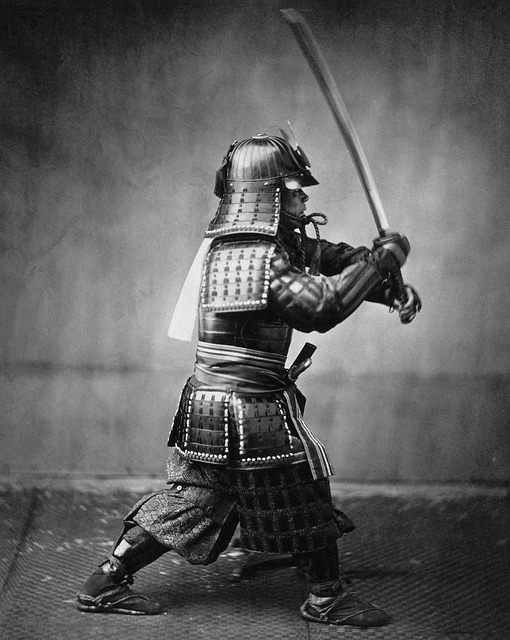The History of Brazilian Jiu-Jitsu: From Its Roots to Today
History is not everyone’s cup of tea. Nevertheless, knowing history is important. Especially when it is about a versatile combat sport such as Brazilian Jiu-Jitsu which has a complex as well as rich history.
Read on if you like to know more about the history of BJJ from its humble beginnings to the global phenomenon it is today.
Introduction
The word Jiu-Jitsu is derived from the Japanese language. “Ju” means gentle and “Jitsu” means art. So, the direct translation of Jiu-Jitsu is the – gentle art. If the translation is strictly interpreted, Jiu-Jitsu is a non-violent martial art.
Brazilian Jiu-Jitsu is a combat sport that involves grappling, torsions, submission holds, and pressure points to dominate and pin the opponent to the ground. It requires knowledge of human anatomy. Brazilian Jiu-Jitsu allows a small and weak person to defend himself against a stronger person because it focuses on techniques rather than physical strength.
Brazilian Jiu-Jitsu is one of the most popular forms of martial arts in the world right now and it is growing. It is a popular combat sport all around the world and an effective self-defense mechanism as well.
As it is a form of martial arts that is of Japanese origin, it has a rich history that left its trail from several centuries back. We will discuss elaborately the history of Brazilian Jiu-Jitsu starting from the very root which is Japanese origin.
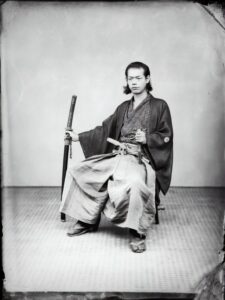
Jiu-Jitsu as the Last Resort of Defense
The roots of Jiu-Jitsu cannot be accurately traced back to its very origin because many similar combat techniques were seen from China to India. The origin of Jiu-Jitsu was developed by the warrior caste in feudal Japan who was also known as “Samurais”.
Samurais used to engage in intense sword fights on a battleground by foot or sitting on horseback. At one point, it was very likely for the fighters or the samurais to lose their “katanas” also known as samurai swords, and get disarmed by their opponents. Physical strikes were not effective at all because samurais were dressed with heavy armor. So, they needed a method of self-defense that required no weapon and took advantage of the human anatomy leading to takedowns which led to the development of Jiu-Jitsu.
The concept of Japanese Jiu-Jitsu was to achieve maximum effectiveness with bare minimum effort. This later on created different subdivisions of different versions of Jiu-Jitsu. The different versions of Jiu-Jitsu focused on different aspects but the core concept was always the same.
The Early Development of Japanese Jiu-Jitsu
In the 1800s, a major political and economic change in Japan occurred which was led by emperor Meji. A national conscript army was introduced and the warrior class also known as the samurais were severely nerfed. The decline of feudalism led to a decline in martial arts, which were on the verge of extinction but then rescued in the late 1880’s, thanks to Jigoro Kano.
The early development of Japanese Jiu-Jitsu was led by Jigoro Kano, who studied traditional Japanese Jiu-Jitsu. In 1882, he opened a martial arts training school which was known as “Kodokan”. Jigoro Kano conducted expansive research on the traditional combat techniques that he learned from Tenshin Shin’yo Ryu and the Kito Ryu. He refined and combined these techniques which led to him giving birth to “Kokodan Judo”. Kokodan Judo consisted of the most effective techniques of Japanese Jiu-Jitsu which he taught his students in his martial arts training school.
One of the most highlighted innovations of Kokodan Judo was the implementation of “Randori”, which was a non-cooperative live sparring practice. Randori emphasizes throws, joint locks, chokes, and many other techniques. Randori helps the practitioner to build up reflexes and use techniques against fully armed opponents. This style of Jigoro Kano was put through a test in a big martial arts tournament that was hosted by the Tokyo Police back in 1886. Fighters of Kokodan fought against various opponents who used different styles of Jujutsu and they didn’t lose a single match. They won 13 matches and drew 2 matches out of 15 matches. This proved Kano’s hybrid technique to be the most efficient amongst all the techniques.
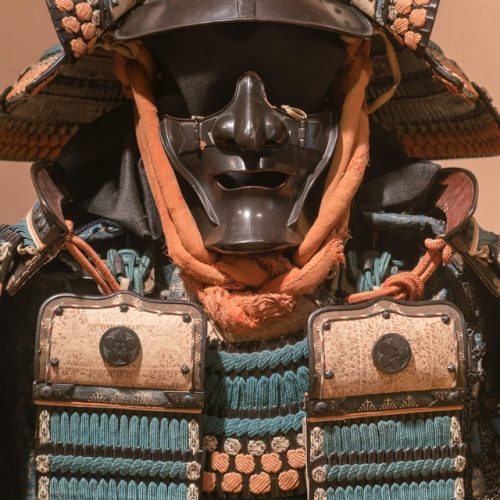
The Odyssey of Mitsuyo Maeda
Mitsuyo Mayeda is the son of a sumo wrestler who was born in Funazawa Village which was situated in Hirosaki City on 18 November 1878. He joined Kokodan in 1894 and began training. He was very determined and hardworking. Soon he became the top student of Kodokan. He mastered every single technique but he was especially known for his expertise in ground fighting.
Mitsuyo Maeda decided to travel the world for the quest of showing the effectiveness and spreading the techniques he learned from Kano’s Kodokan. After his success in a Judo tournament where he remained undefeated, Kano sent him to the U.S.A in 1904.
Throughout Maeda’s career, he fought more than hundreds of matches in the U.S.A, Mexico, Cuba, Great Britain, Continental Europe, and many more. He took part in different types of mixed matches where different fighting techniques were used and still managed to stay undefeated his whole career. Everyone started to know about his success and became more and more interested in the fighting techniques he used.
Another reason for Maeda’s internationally recognized success was the diplomatic relationship between U.S.A and Japan. Even President Theodore Roosevelt was impressed and took lessons from Yoshiaki Yamashita who was another apprentice of Kano. This diplomatic relationship paved his way to spread Jiu-Jitsu throughout America and its surroundings.
Finally, Maeda set sail towards Brazil in 1914. He decided to settle down in Brazil and opened a Jiu-Jitsu academy there. One day a capoeira artist named Pé de Bola challenged Maeda. Pé de Bola was 6’3” weighing almost 220 pounds; he was significantly bigger and physically stronger than Maeda. Maeda accepted the challenge and even allowed his opponent to use a knife. Maeda took him down barehanded and managed to drop a fair amount of jaws.
Maeda launched the first tournament of Jiu-Jitsu in Brazil for the sake of promoting it. This tournament was held in the form of a festival that dragged a lot of attention towards Jiu-Jitsu.
Maeda used to challenge famous fighters and even Boxers of Brazil and was successful every time. A boy named Carlos Gracie was fascinated by the success of Maeda and got interested in learning his techniques. Maeda was friends with Gastão Gracie who was a local businessman and Carlos Gracie happened to be the son of Gastão Gracie’s. Hence, Maeda, later on, accepted him as an apprentice in his Jiu-Jitsu academy.

Carlos Gracie’s Jiu-Jitsu Academy
Carlos Gracie was a sincere and committed student of Maeda’s Jiu-Jitsu academy. Carlos studied and mastered Maeda’s versatile Jiu-Jitsu techniques for years. He wanted to circulate his knowledge and decided to take his younger brother as his student.
One of Carlos’s brothers named Helio Gracie was having a hard time learning the techniques of Maeda because he was comparatively weak and had a feeble body. This made Carlos research more on Jiu-Jitsu and make adjustments to it so that it becomes possible for people to learn regardless of their physical structure and strength.
Out of love and compassion for Jiu-Jitsu, Carlos Gracie opened his own Gracie family Jiu-Jitsu academy where he dedicated himself to the development of Jiu-Jitsu and spread it through teaching. They even promoted themselves by advertising in newspapers and challenging people. Legend says they advertised their academy with such headlines as “If you want a broken arm or rib, come to Gracie Academy.”
Carlos Gracie along with the other Gracie’s launched the famous “Gracie Challenge” where they introduced No-Hands-Barred (NHB) challenge. Any fighters could challenge the Gracie’s in an NHB match. Renowned fighters all around Brazil took the challenge. In this challenge, the Gracie’s remained dominant most of the time. This challenge introduced the Gracie family to different types of combat techniques. As a result, they found different scopes of improvement which contributed to the development process of Jiu-Jitsu even more.
With the help of Jiu-Jitsu, the people of Brazil who were physically small and weak learned to defend themselves against strong people. They could take down muscular men easily by applying Jiu-Jitsu techniques. Helio, the younger brother of Maeda became an instructor of the Gracie Academy later on. He introduced innovations and technical advancements as being physically weak and inferior among all brothers. He was a role model for all the weaker people of Brazilian society and he was a successful instructor as well.
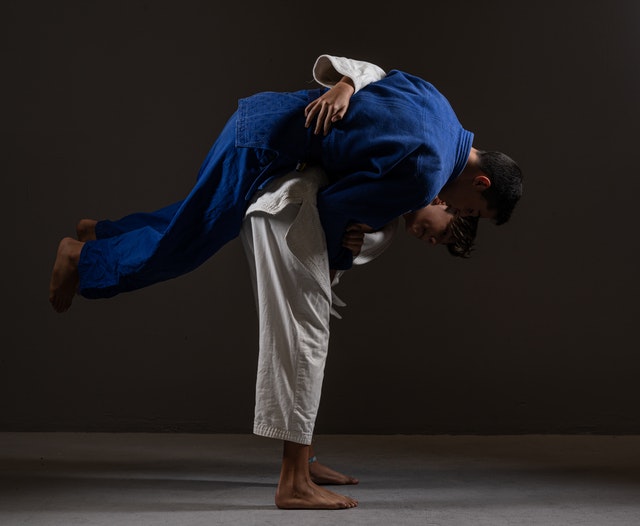
Jiu-Jitsu as Brazil’s National Sport
The Gracie family became more and more popular because of their prevailing dominance in combat sports all over Brazil and the rivalry between other top academies. Another main reason for its popularity was also because of its versatility in self-defense.
In the 1960s, Carlson Gracie took the baton of his uncle, Helio Gracie, as the head of the academy which was an important step that led to the consolidation of Jiu-Jitsu as a sport. In 1967, the Guanabara Jiu-Jitsu Federation was founded in Rio which was authorized by Brazil National Sports Confederation.
A detailed ruleset was introduced as it got recognition as a national sport. The matches were conducted on a point basis with a time span of 5 minutes with 3 minutes of overtime for adults. One point is fixed for different moves and the fighter with the most points will be announced as the winner. There were penalties set for non-compliance of the rules as well.
Jiu-Jitsu Going International
In the late 1980s, many members of the Gracie began to migrate to the U.S. The Gracie family took part in the world-famous Ultimate Fighting Championship (UFC). Royce Gracie was selected by the Gracie family to represent the family and Brazilian Jiu-Jitsu in front of the whole world. Royce had a slim body which is very unlikely of UFC participants and he was the smallest participant. However, he shocked the whole world by easily taking down his opponents one after one.
The legendary Royce Gracie impressed people with his dominant performance throughout UFC and bagged a handful amount of victories against fighters of different techniques in NHB matches. Other members of the Gracie family also dominated in many other international events. Rickson, brother of Royce was undefeated in an event in Japan.
In most cases, fighters who were only focused on offensive moves such as kicking and punching couldn’t stand against Brazilian Jiu-Jitsu fighters because their strength was ultimately used against them. The continuous success of the Gracie family made Brazilian Jiu-Jitsu famous worldwide and proven it as one of the most effective self-defense techniques.
Carlos Gracie Jr. continued and upheld his father’s legacy by hosting tournaments and advertising Jiu-Jitsu as a regulated sport. He founded the International Brazilian Jiu-Jitsu Federation (IBJJF) back in 1994 to promote it globally. In 1996, the first Jiu-Jitsu tournament was launched by International Brazilian Jiu-Jitsu Federation (IBJJF) which got a huge response worldwide. In this event, more than 50 countries participated with participants more than 3000.
With the goal of upholding Jiu-Jitsu as an Olympic event, the Sport Jiu-Jitsu International Federation (SJJIF) was founded in 2012. Jiu-Jitsu Global Federation (JJGF) was founded in 2014 by Rickson Gracie to put emphasis on the philosophy of Helio Gracie of Brazilian Jiu-Jitsu which is self-defense.
Jiu-Jitsu Competitions Throughout the World
Competitions and tournaments are one of the main reasons for the growth of Brazilian Jiu-Jitsu. Competitions are arranged since the 1990s and they are governed under a central governing authority. However, there are other authorities arranging competitions with different rules and different forms of Jiu-Jitsu. Let’s learn about some of the most famous Brazilian Jiu-Jitsu tournaments.
The World Jiu-Jitsu Championships (Mundial): This is considered the biggest Brazilian Jiu-Jitsu tournament which was first introduced in 1996. It has been constantly running until now after its initial introduction. It is organized by CBJJ/IBJJF.
The Pan Jiu-Jitsu Championship (Pan American): This is considered as the second-best Jiu-Jitsu tournament. It’s hosted by IBJJF, which is gaining more popularity day by day.
World Professional Jiu-Jitsu Championship (World Pro Cup): Though this is a newer addition to Jiu-Jitsu events, this is one of the biggest tournaments in the world right now. This tournament is organized by UAE. Best participants are selected for the main event by hosting continent-based qualifiers. The prize pool is very attractive and this motivates more participants to take part in it.
Brasileiro de Jiu-Jitsu (Brazilian National Championship): This is the most important and prestigious national Jiu-Jitsu tournaments. This event gives Jiu-Jitsu experts all over Brazil the opportunity to display their skills and become the best.
European Open Championship: This is the biggest Jiu-Jitsu tournament for the European continent. This event is held every year in January in Lisbon, Portugal organized by CBJJ/IBJJF.
Abu Dhabi Combat Club (ADCC): This is the biggest and most prestigious submission grappling based tournament in the world. Though it is not specifically for Jiu-Jitsu, Jiu-Jitsu has been the most dominating and successful technique in this event.
The Current Form of Brazilian Jiu-Jitsu
By now, we have covered most of the history concerning Brazilian Jiu-Jitsu. Now let’s talk about the current state of Brazilian Jiu-Jitsu.
Brazilian Jiu-Jitsu has many similarities with Japanese martial arts like judo and jujitsu. The philosophy behind judo is to use the strength of the opponent against them. It was defensive rather than offensive. However, by the recent course of time, sports were more emphasized than defense. As a result, the purpose of Jiu-Jitsu shifted from being defensive to achieving victory.
Brazilian Jiu-Jitsu also went through many changes. The Gracie race participated in many challenges to promote Jiu-Jitsu. They even went global. Many new aspects and rules were introduced to Jiu-Jitsu and it got divided into three categories. They are self-defense, free fighting competition, and sport grappling with and without the Gi.
Self-defense can include offensive techniques such as striking and techniques involving bare hands against armed opponents. Free fighting competitions are now popularly known as MMA and sport grappling with and without Gi are matches that are based on submission techniques without striking.
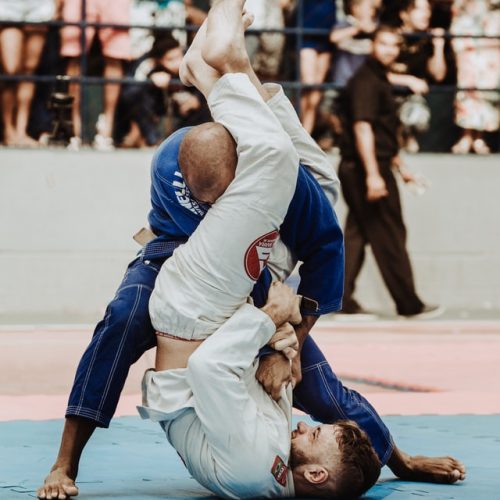
Conclusion
Overall, the core concept of Brazilian Jiu-Jitsu is that it is an effective method of self-defense that allows a physically weak person to defend himself against a strong person, whether that person is armed or unarmed. It took a lot of time to develop and form its present state; we are talking about centuries in development.
Self-defense is very important for the sake of survival and Brazilian Jiu-Jitsu is proved to be one of the most effective self-defense mechanisms in the world. So, anyone can learn it regardless of their physical strength or size. Anyone is also free to learn any form of Brazilian Jiu-Jitsu depending on their purpose.
This is also a great form of combat sport which proved its superiority in many international events. There are many tournaments with attractive prize money which is a great opportunity for Jiu-Jitsu experts. It can be noticed that Brazilian Jiu-Jitsu is growing fast globally and has much potential in the near future.

